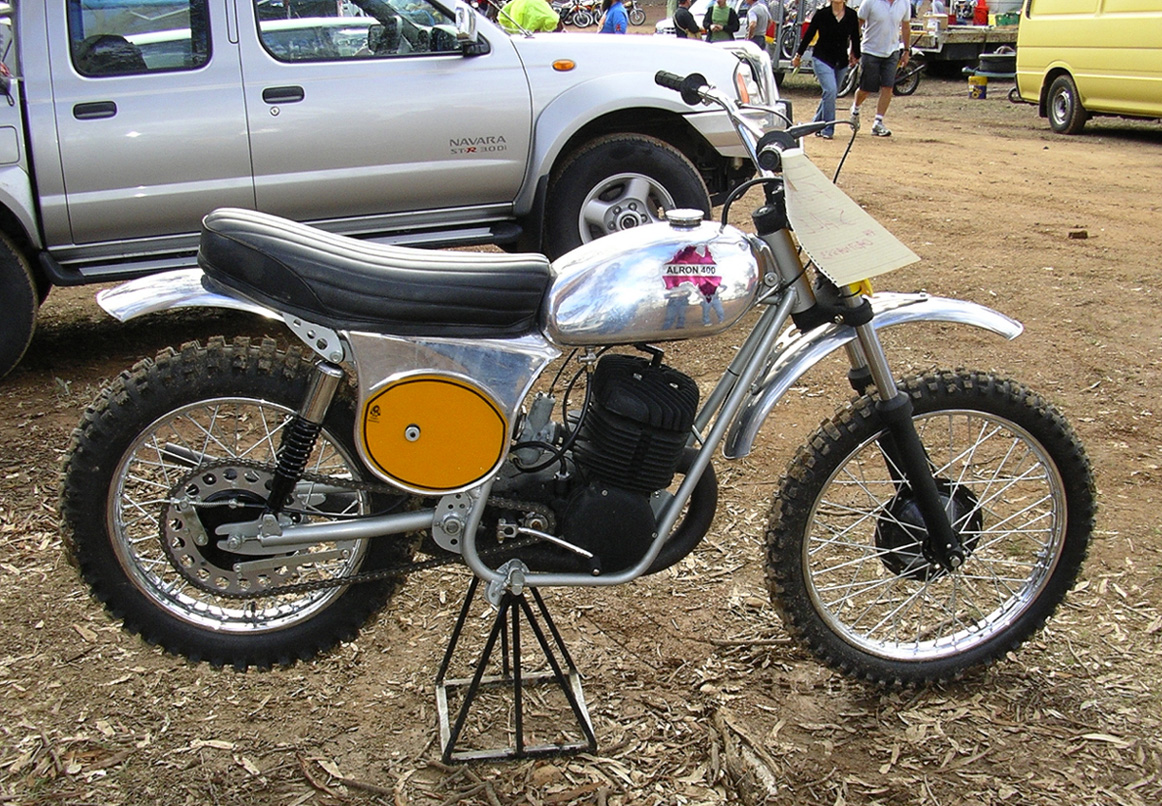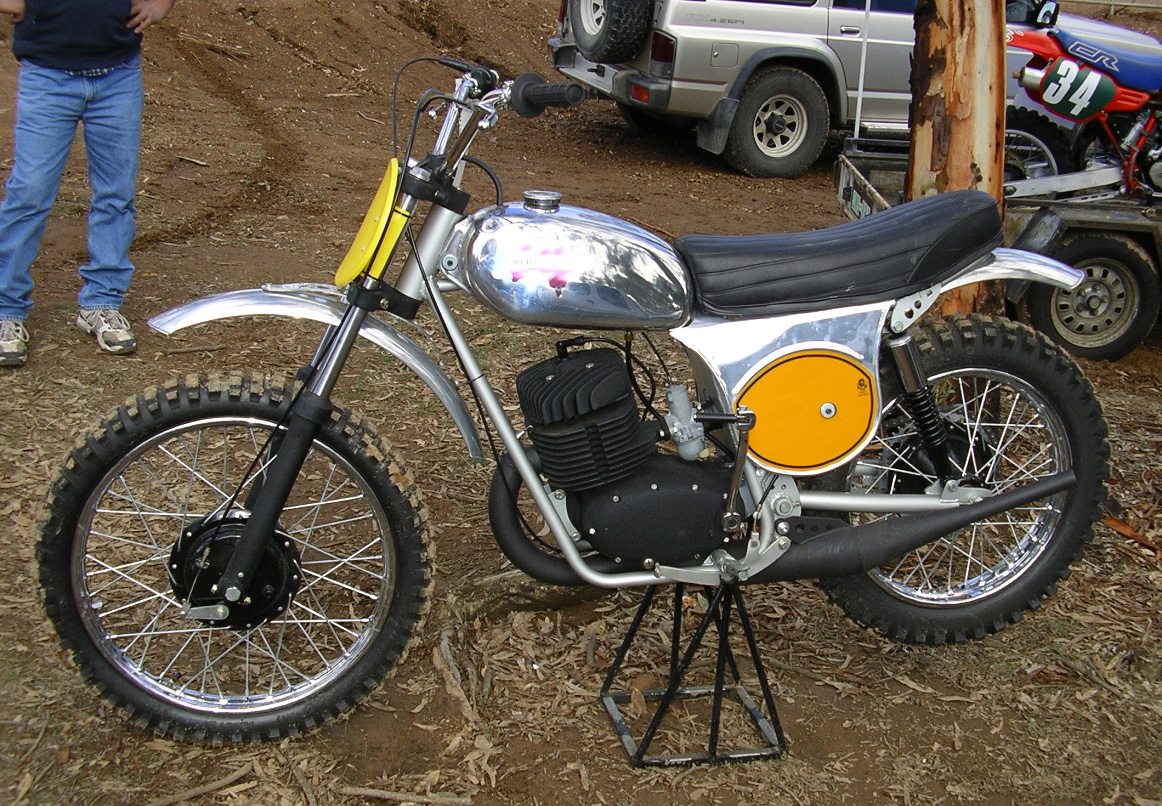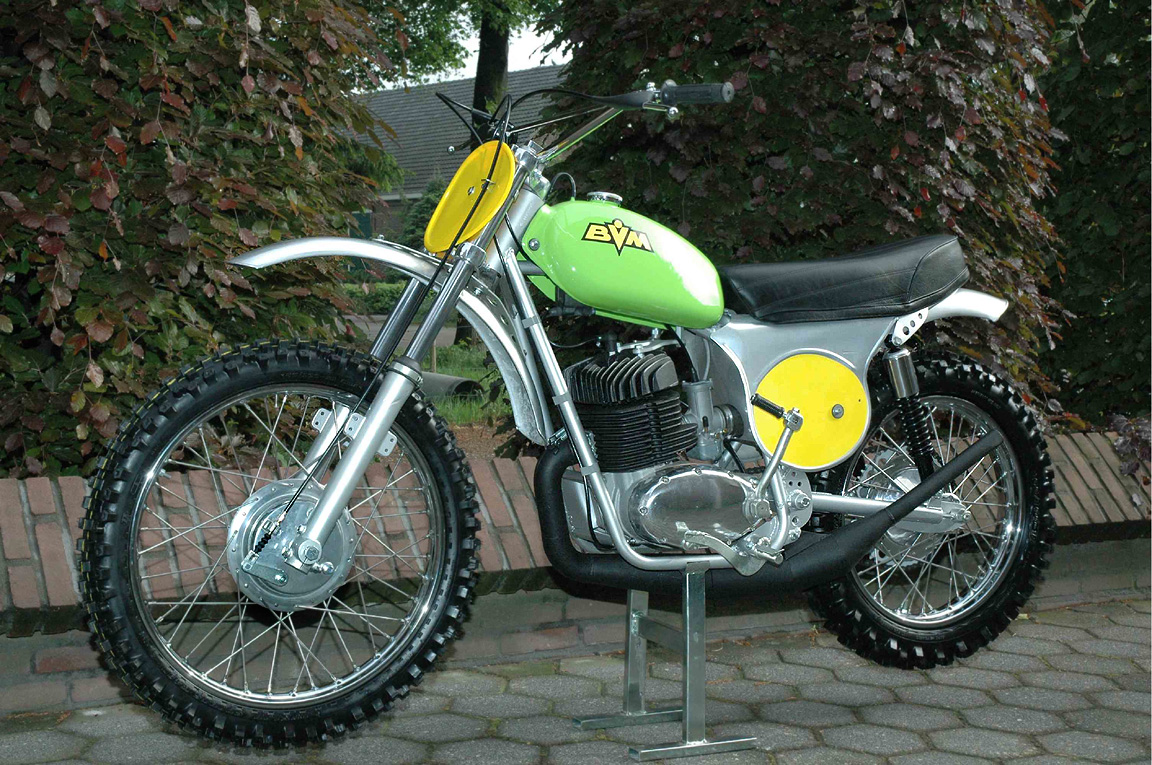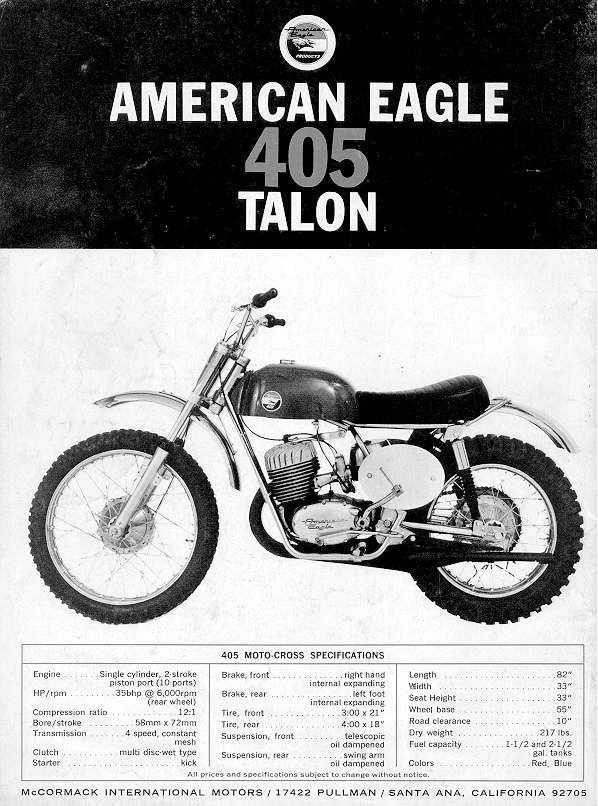![]() w
w

![]() 1972 Alron
1972 Alron ![]()
|
|

|
*(One could cruelly speculate that the bullet proof case is an attempt to prevent disgruntled former BVM investors from shooting the crap out of the bike)
COMPARE THE ABSOLUTELY IDENTICAL BVM AND ALRON BELOW |

![]() 1972 BVM
1972 BVM ![]() The bike is featured in VMX issue #31
The bike is featured in VMX issue #31

1972 American Eagle 405: Although the photos arenąt the best quality, even Stevie Wonder could see the Sprite/Alron/BVM family traits
|
The bikes must have sold reasonably well because they appear to have hung in there from 1969 to at least 1972, importing an undisclosed number of bikes until they suddenly went bankrupt holding many unpaid for bikes in warehouse stock. The stock was eventually auctioned and purchased by the giant Mitsubishi Corporation who heavily discounted the bikes as well as selling them by mail order and through department stores. The final model offered is almost identical to the BVM/Alron versions using the lighter and vastly improved so called fastback frame. One interesting difference to other Sprite clones are the outer engine cases of the Sprite engine being cast with the American Eagle logo. This helped perpetuate the assumption that the American Eagle was an American product. Although the American distributors didnąt actually lie about the origin of the bike, they also didnąt exactly shout from the rooftops that they were made in England. The advertisement below gives all of the vital statistics except its place of manufacture. You still occasionally see brand new, never ridden American Eagles on eBay going for not unreasonable money.
Below: Rick Super Hunky Siemans take on the American Eagle from his column in Off-Road.com. AMERICAN
EAGLE 405 MX Here are some specs on the bike:
PURPOSE:
Racing
below: : A Sprite frame kit. |
 |
|
|
|
|
|
|
|
A
full version of Firkos Sprite/American Eagle/Alron saga, spread over
two issues will appear in VMX Magazine
sometime in 2011
|
|
additionally,
check this very detailed OZVMX
Blog about the Alrons
article ©2008 MARK FIRKIN